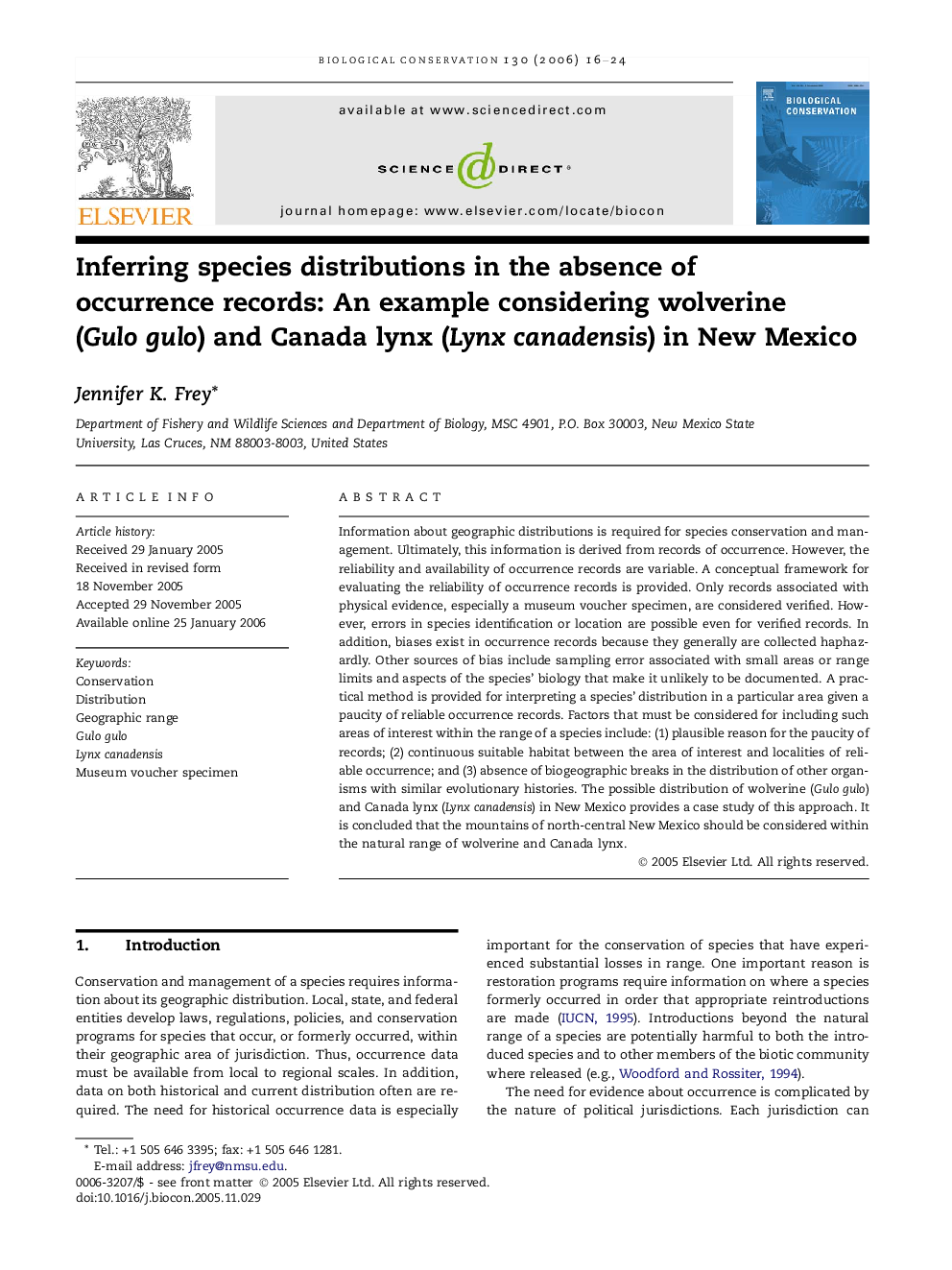| Article ID | Journal | Published Year | Pages | File Type |
|---|---|---|---|---|
| 4387771 | Biological Conservation | 2006 | 9 Pages |
Information about geographic distributions is required for species conservation and management. Ultimately, this information is derived from records of occurrence. However, the reliability and availability of occurrence records are variable. A conceptual framework for evaluating the reliability of occurrence records is provided. Only records associated with physical evidence, especially a museum voucher specimen, are considered verified. However, errors in species identification or location are possible even for verified records. In addition, biases exist in occurrence records because they generally are collected haphazardly. Other sources of bias include sampling error associated with small areas or range limits and aspects of the species’ biology that make it unlikely to be documented. A practical method is provided for interpreting a species’ distribution in a particular area given a paucity of reliable occurrence records. Factors that must be considered for including such areas of interest within the range of a species include: (1) plausible reason for the paucity of records; (2) continuous suitable habitat between the area of interest and localities of reliable occurrence; and (3) absence of biogeographic breaks in the distribution of other organisms with similar evolutionary histories. The possible distribution of wolverine (Gulo gulo) and Canada lynx (Lynx canadensis) in New Mexico provides a case study of this approach. It is concluded that the mountains of north-central New Mexico should be considered within the natural range of wolverine and Canada lynx.
